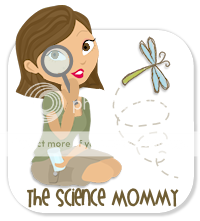You know the Science Mommy loves good books, but so often good books convey misinformation about real animals. Learning to distinguish between Real and Not Real or Fiction and Non-Fiction is an important learning target. This activity is prompted by my own Kid Scientist and is an adaptation of a Project Wild activity, "And the Wolf Wore Shoes."
Ages: Little Kid Scientists
Materials:
- Lots of books that depict both real and imaginary animals (see the end of the post for ideas). This can also be done at the library if you don't have many books at home.
- This activity sheet
Procedure:
- Share the books with your Kid Scientist. Typically they enjoy looking at the pictures in the non-fiction books and listening to the fiction stories.
- Ask your Kid Scientist if she can divide the books into two piles...books about real animals and books about make-believe animals.
- Use the first part of the activity sheet to record these observations. Depending on the age of your Kid Scientist: mom can write the titles, mom can write the names of animals or characters, kids can draw pictures or kids can write the names of animals or characters.
- Using examples from the books, work together on the second part of the activity sheet. This will introduce Kid Scientists to the idea that all animals have specific needs for food & shelter and have particular behaviors. There are many ways to fill this out...conversation, dictating to mom, drawing pictures or writing on their own...the conversation and learning is more important than the finished page!
- This activity opens the door to having many conversations about Real / Not Real which is important, developmentally for Kid Scientists
Some of the Science Mommy's Favorite Books...
Real Animals:
Dorling Kindersley Encyclopedias
Albino Animals by Kelly Milner-Halls
Owen and Mzee by Isabella Hatkoff
Whose Tracks are These by James Nail
Owls by Gail Gibbons
Make-Believe Animals:
Scaredy Squirrel by Melanie Watt
There's a Hair in My Dirt by Gary Larson
The Lorax by Dr. Seuss
Shark and Lobsters Amazing Undersea Adventure by Vivienne Schwarz
Chicken Little by Steven Kellogg
True Story of the Three Little Pigs by Jon Sceiszka and Lane Smith


























